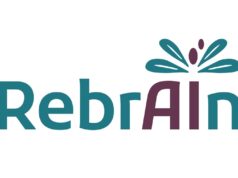 In a systematic review and meta-analysis of the current literature, deep brain stimulation (DBS) with a short pulse width has been shown to potentially induce more tremor reduction in essential tremor patients, but does not appear to offer a notably different level of therapeutic efficacy for Parkinson’s disease, as compared to more conventional DBS therapy.
In a systematic review and meta-analysis of the current literature, deep brain stimulation (DBS) with a short pulse width has been shown to potentially induce more tremor reduction in essential tremor patients, but does not appear to offer a notably different level of therapeutic efficacy for Parkinson’s disease, as compared to more conventional DBS therapy.
Sara Smeets (University Hospitals Leuven, Leuven, Belgium) and colleagues also report that—as per their findings, now published in the journal Brain Stimulation—short-pulse DBS enlarges the therapeutic window with a wider amplitude range in both Parkinson’s and tremor treatment, but was not found to alter therapeutic windows defined by charge per pulse (CPP).
“To maximise clinical benefit and minimise stimulation-induced side-effects, optimising DBS parameters is paramount,” the authors state in their report. “Recent literature suggests a potential benefit of short pulse-width DBS [≤40μs] over conventional pulse-width DBS [≥60μs] in movement disorders.”
Smeets and colleagues go on to assert that, based on clinical and neurophysiological measurements and theoretical models, some researchers have suggested that the ideal pulse width for DBS in movement disorders like Parkinson’s and tremor is shorter than the conventional 60μs. Here, the authors also highlight the fact that longer pulse widths typically narrow the therapeutic window and increase energy consumption.
“Recently, novel devices capable of delivering pulse widths as low as 10μs have been commercialised, enabling researchers to corroborate these predictions,” they continue. “In a small number of recently published case series and small randomised controlled trials [RCTs], short pulse-width DBS indeed appears to widen the therapeutic window—defined as therapeutic amplitude range—and lower energy consumption versus conventional DBS. Nevertheless, short-pulse DBS has not yet been widely adopted in clinical practice and therapeutic window defined by CPP/TEED [total electrical energy delivered] is often neglected in those studies.”
With this in mind, the researchers set out to compare the therapeutic window, therapeutic efficacy, side-effects, and energy consumption, between short-pulse and conventional DBS therapy in movement disorders. On 12 July 2022, they performed a systematic search of Medline, Embase, Cochrane Library and Web of Science, with appropriate paired analyses being applied to their results.
Their search returned a total of 11 Parkinson’s disease studies and six essential tremor studies eligible for systematic review—of which nine Parkinson’s disease studies consisting of 143 patients and four essential tremor studies consisting of 26 patients were included in a meta-analysis. Smeets and colleagues’ search did also pertain to dystonia patients but, ultimately, none of these studies met the inclusion criteria. The authors note that all those included were crossover studies published between 2015 and 2022.
Among the key findings of their meta-analysis was the fact that the therapeutic window, when defined as therapeutic amplitude range, was larger with short-pulse versus conventional DBS in both Parkinson’s (standardised mean difference [SMD], –1.04; p<0.001) and tremor (SMD, –0.71; p<0.001). However, the therapeutic window between the two DBS types did not differ in terms of CPP.
Additionally, across short-pulse and conventional stimulation therapies, Smeets and colleagues found no difference in Parkinson’s patients regarding a range of therapeutic and side-effect metrics—including Movement Disorder Society unified Parkinson’s disease rating scale-part III (MDS-UPDRS-III); speech and gait; dyskinesia; non-motor symptoms, and quality of life. They did, conversely, find that scores on the Fahn-Tolosa-Marin tremor rating scale in tremor patients were lower with short-pulse compared to conventional DBS (SMD, 0.36; p<0.001), indicating improved clinical outcomes. A qualitative analysis undertaken as part of the study also suggested fewer stimulation-induced side-effects with short-pulse DBS.
“This is, to our knowledge, the first comprehensive literature study comparing short-pulse DBS to conventional DBS in movement disorders,” Smeets and colleagues note, before acknowledging fairly short times between pulse-width adjustment and outcome evaluation in some Parkinson’s trials, a relatively small number of essential tremor studies and patients, and a lack of studies assessing the more long-term effects of short-pulse DBS, as key limitations of their analysis.
“Despite preliminary promising results of short-pulse DBS, further research should be undertaken to prospectively evaluate [its] real-life, long-term value in larger patient cohorts,” the authors continue, also averring that “several questions remain unanswered”—including the precise underlying neurophysiological effects of pulse width—and, as such, “before any changes in clinical pathways are recommended, stronger evidence should be provided”. They go on to identify Parkinson’s patients receiving globus pallidus internus (GPi)-DBS and dystonia patients as additional populations in which the effects of short-pulse DBS “remains to be investigated”.
“Short-pulse DBS increases the amplitude-based therapeutic window in both Parkinson’s disease and essential tremor, but not the CPP-based therapeutic window versus conventional DBS,” Smeets and colleagues conclude. “Furthermore, short-pulse DBS seems to be non-inferior in Parkinson’s patients regarding therapeutic effect and stimulation-induced side-effects, and may be superior in essential tremor patients in suppressing tremor and reducing stimulation-induced ataxia—although the available evidence is scarce. Real-world data on battery longevity are still lacking. Only long-term data will determine the true value of short-pulse DBS in movement disorders. For now, the use of short-pulse DBS appears reasonable in essential tremor and optional in STN [subthalamic nucleus]-DBS for Parkinson’s disease.”









